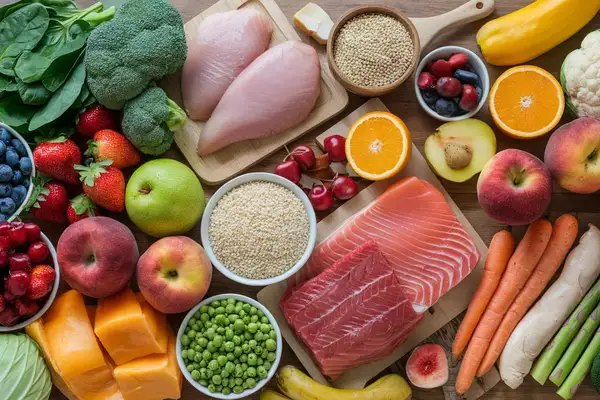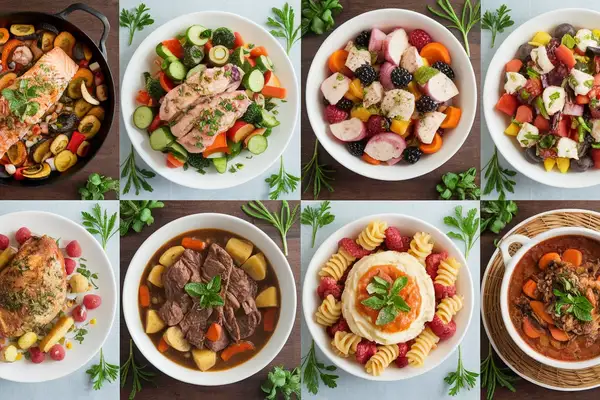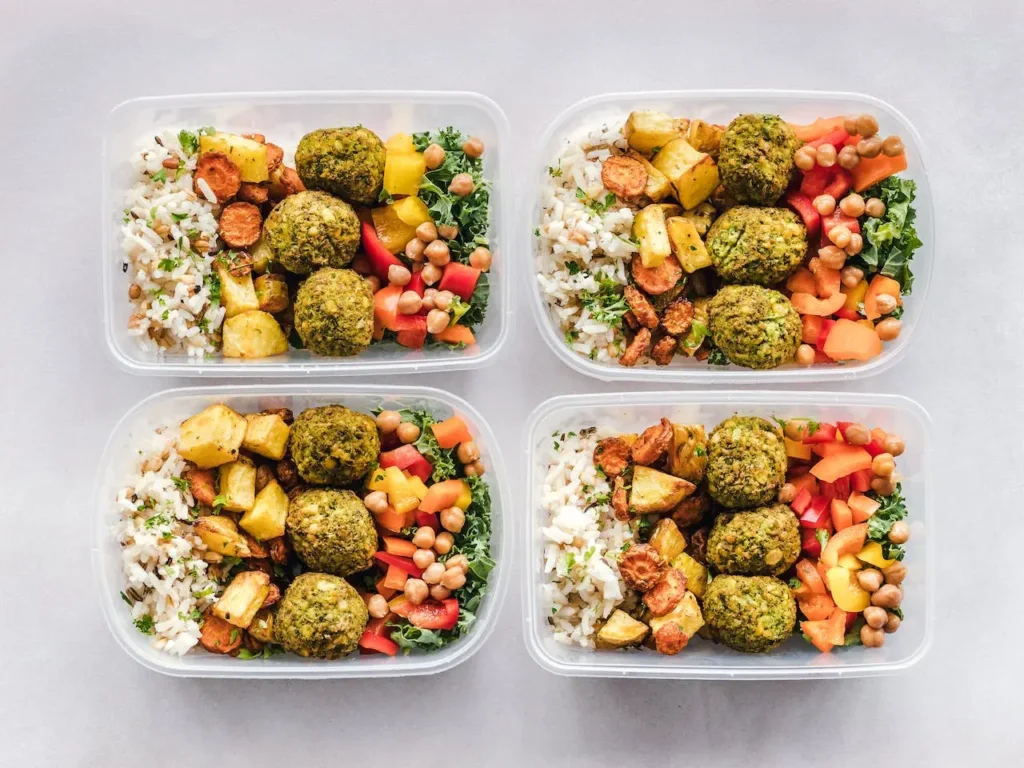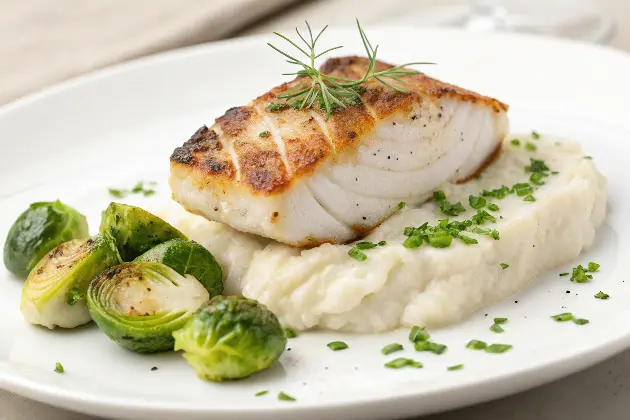The Best 7 Day Meal Plan for Pancreatitis: Foods to Eat & Avoid
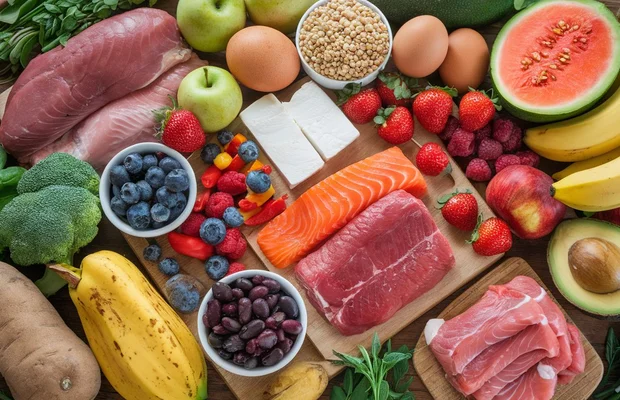
What is Pancreatitis?
This post may contain affiliate links, meaning I may earn a commission if you make a purchase, at no extra cost to you. I only recommend products I trust. Thank you for your support.
Pancreatitis is a condition characterized by inflammation of the pancreas, an organ located behind the stomach.
The pancreas plays a crucial role in digestion, producing enzymes that aid in the breakdown of food.
When the pancreas becomes inflamed, it can disrupt the normal digestive process and lead to various symptoms such as abdominal pain, nausea, and vomiting.
One of the key aspects of managing pancreatitis is following a 7 day meal plan for pancreatitis.
Since the pancreas is responsible for producing digestive enzymes, it is important to eat low-fat foods and anti-inflammation foods that are easy to digest and do not overwork the pancreas.
This 7 day meal plan for pancreatitis provides a structure and guidance in making appropriate food choices, ensuring that the diet is well-balanced and supports the healing process.
7 Day Meal Plan for Pancreatitis (Pancreatitis Diet Menu)
This ultimate guide provides a comprehensive 7 day meal plan for pancreatitis, including low fat meals for breakfast, lunch, snack, and dinner ideas for each day.
Additionally, we’ve incorporated low fat pancreatitis diet recipes to support your nutritional needs and promote digestive health.
By following this pancreatitis meal plan, you can take control of your diet and design your pancreatitis menu.
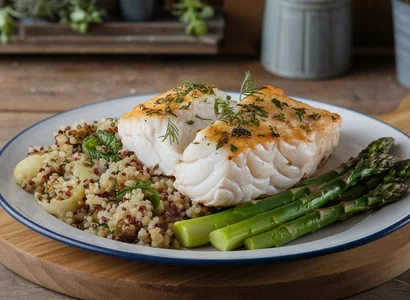
Day 1
Breakfast:
- Oatmeal with sliced bananas and a sprinkle of cinnamon (1/2 cup of cooked oatmeal, 1/2 banana)
- Scrambled eggs with spinach and bell peppers (2 eggs, 1/4 cup of spinach, 1/4 cup of bell peppers)
- Smoothie with almond milk, strawberries, and a tablespoon of chia seeds (1 cup of almond milk, 1 cup of strawberries, 1 tbsp of chia seeds)
Lunch:
- Quinoa salad with grilled chicken, zucchini, and cucumber (1 cup of cooked quinoa, 3 oz of grilled chicken, 1/4 cup of zucchini, 1/4 cup of cucumber)
- Mixed green salad with avocado, walnuts, and apple cider vinegar (2 cups of mixed greens, 1/4 avocado, 2 tbsp of walnuts, 2 tbsps of apple cider vinegar)
- Minestrone soup with whole grain bread (1 cup of minestrone soup, 1 slice of whole grain bread)
Dinner:
- Baked cod fillet with herbs, steamed green beans, and quinoa (4 oz baked tilapia, 1/2 cup steamed green beans, 1/2 cup cooked quinoa)
- Grilled turkey breast with steamed broccoli and brown rice (4 oz of turkey breast, 1 cup of steamed broccoli, 1/2 cup of cooked brown rice)
- Vegetarian stir-fry with tofu, bell peppers, and snap peas served over brown rice (4 oz of tofu, 1/4 cup of bell peppers, 1/4 cup of snap peas, 1/2 cup of cooked brown rice)
Snacks:
- Greek yogurt with honey and blueberries (1/2 cup of Greek yogurt, 1 tsp of honey, 1/4 cup of blueberries)
- Carrot sticks with hummus (1 medium carrot, 2 tbsp of hummus)
- Apple slices with almond butter (1 medium apple, 1 tbsp of almond butter)
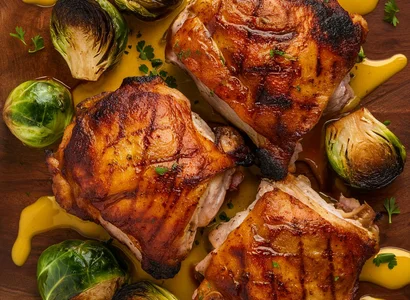
Day 2
Breakfast:
- Whole wheat toast with almond butter and sliced strawberries (1 slice of whole wheat toast, 1 tbsp of almond butter, 1/4 cup of sliced strawberries)
- Vegetable omelette with mushrooms, spinach, and feta cheese (2 eggs, 1/4 cup of mushrooms, 1/4 cup of spinach, 1 tbsp of feta cheese)
- Green smoothie with kale, pineapple, and coconut water (1 cup of kale, 1 cup of pineapple, 1 cup of coconut water)
Lunch:
- Quinoa and black bean salad with steamed carrots and corn (1 cup of cooked quinoa, 1/2 cup of black beans, 1/2 cup of carrots, 1/4 cup of corn)
- Spinach salad with grilled shrimp, strawberries, and balsamic vinaigrette dressing (2 cups of spinach, 3 oz of grilled shrimp, 1/4 cup of strawberries, 1 tbsp of balsamic vinaigrette dressing)
- Lentil soup with whole grain crackers (1 cup of lentil soup, 5 whole grain crackers)
Dinner:
- Grilled chicken breast with roasted Brussels sprouts and sweet potatoes (4 oz of grilled chicken breast, 1 cup of roasted Brussels sprouts, 1/2 cup of roasted sweet potatoes)
- Baked cod with steamed green beans and quinoa (4 oz of baked cod, 1 cup of steamed green beans, 1/2 cup of cooked quinoa)
- Vegetable curry with chickpeas and brown rice (1 cup of mixed vegetables, 1/2 cup of chickpeas, 1/2 cup of cooked brown rice)
Snacks:
- Cottage cheese with pineapple chunks (1/2 cup of cottage cheese, 1/4 cup of pineapple chunks)
- Celery sticks with peanut butter (2 medium celery sticks, 1 tbsp of peanut butter)
- Trail mix with almonds, dried cranberries, and pumpkin seeds (1/4 cup of almonds, 2 tbsp of dried cranberries, 2 tbsp of pumpkin seeds)
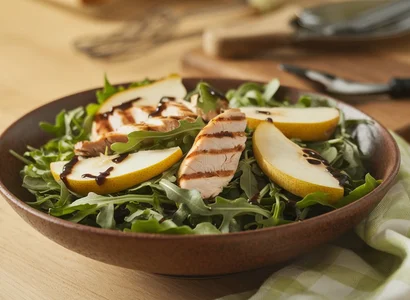
Day 3
Breakfast:
- Greek yogurt with granola and mixed berries (1/2 cup of Greek yogurt, 1/4 cup of granola, 1/4 cup of mixed berries)
- Veggie scramble with zucchini, bell peppers, and goat cheese (2 eggs, 1/4 cup of zucchini, 1/4 cup of bell peppers, 1 tbsp of goat cheese)
- Berry smoothie with almond milk and flaxseeds (1 cup of almond milk, 1 cup of mixed berries, 1 tbsp of flaxseeds)
Lunch:
- Quinoa and roasted vegetable salad with feta cheese (1 cup of cooked quinoa, 1 cup of roasted vegetables, 1 tbsp of feta cheese)
- Arugula salad with grilled chicken, pear slices, with balsamic vinegar with olive oil (2 cups of arugula, 3 oz of grilled chicken, 1/4 cup of pear slices, 1 tbsp of olive oil)
- Smooth carrot and ginger soup with a drizzle of olive oil (1 cup carrots, 1 tsp grated ginger, 1 tsp olive oil)
Dinner:
- Grilled salmon with sautéed spinach and quinoa (4 oz of grilled salmon, 1 cup of sautéed spinach, 1/2 cup of cooked quinoa)
- Turkey meatballs with marinara sauce and spaghetti squash (4 turkey meatballs, 1/2 cup of marinara sauce, 1 cup of cooked spaghetti squash)
- Lentil curry with cauliflower rice (1 cup of lentil curry, 1 cup of cauliflower rice)
Snacks:
- Cottage cheese with sliced peaches (1/2 cup of cottage cheese, 1/4 cup of sliced peaches)
- Cucumber slices with tzatziki sauce (1 medium cucumber, 2 tbsp of tzatziki sauce)
- Trail mix with cashews, dried apricots, and sunflower seeds (1/4 cup of cashews, 2 tbsp of dried apricots, 2 tbsp of sunflower seeds)
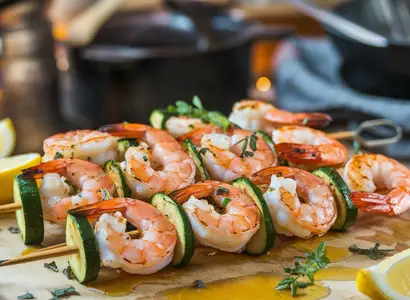
Day 4
Breakfast:
- Chia seed pudding with mixed berries and a drizzle of honey (1/2 cup of chia seed pudding, 1/4 cup of mixed berries, 1 tsp of honey)
- Mango smoothie with coconut milk and a handful of spinach (1 cup of coconut milk, 1 cup of mango, 1 cup of spinach)
Lunch:
- Chicken and vegetable stir-fry with brown rice (3 oz of chicken, 1 cup of mixed vegetables, 1/2 cup of cooked brown rice)
- Beet and goat cheese salad with walnuts and balsamic vinaigrette dressing (2 cups of mixed greens, 1/4 cup of beets, 1 tbsp of goat cheese, 2 tbsp of walnuts, 1 tbsp of balsamic vinaigrette dressing)
- Butternut squash soup with a side of whole grain bread (1 cup of butternut squash soup, 1 slice of whole grain bread)
Dinner:
- Grilled shrimp skewers with roasted zucchini and brown rice (4 oz of grilled shrimp, 1/2 cup of zucchini, 1/2 cup of cooked brown rice)
- Baked chicken breast with steamed broccoli and quinoa (4 oz of baked chicken breast, 1 cup of steamed broccoli, 1/2 cup of cooked quinoa)
- Vegetable stir-fry with tofu, snow peas, and brown rice (4 oz of tofu, 1/4 cup of snow peas, 1/2 cup of cooked brown rice)
Snacks:
- Almond milk smoothie with cocoa powder and a teaspoon of almond butter (1 cup of almond milk, 1 tbsp of cocoa powder, 1 tsp of almond butter)
- Orange slices with a handful of mixed nuts (1 medium orange, 1/4 cup of mixed nuts)
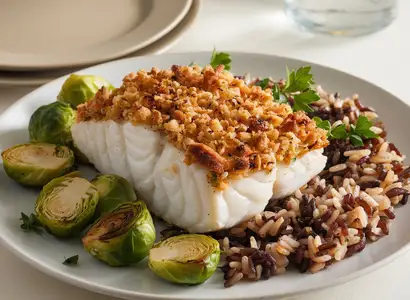
Day 5
Breakfast:
- Overnight oats with almond milk, mixed berries, and a sprinkle of flaxseeds (1/2 cup of rolled oats, 1 cup of almond milk, 1/4 cup of mixed berries, 1 tbsp of flaxseeds)
- Spinach and mushroom omelette with a side of whole wheat toast (2 eggs, 1/4 cup of spinach, 1/4 cup of mushrooms, 1 slice of whole wheat toast)
- Pineapple and coconut smoothie with Greek yogurt (1 cup of pineapple, 1 cup of coconut water, 1/2 cup of Greek yogurt)
Lunch:
- Lentil and vegetable soup with a side of whole grain crackers (1 cup of lentil and vegetable soup, 5 whole grain crackers)
- Cucumber and avocado salad with olive oil and herb vinaigrette (1 cup diced cucumber, 1/2 avocado, 1 tsp olive oil)
- Quinoa and black bean wrap with avocado and salsa (1/2 cup of cooked quinoa, 1/4 cup of black beans, 1/4 avocado, 2 tbsp of salsa)
Dinner:
- Baked cod with roasted Brussels sprouts and quinoa (4 oz of baked cod, 1 cup of roasted Brussels sprouts, 1/2 cup of cooked quinoa)
- Grilled chicken breast with steamed asparagus and brown rice (4 oz of grilled chicken breast, 1 cup of steamed asparagus, 1/2 cup of cooked brown rice)
- Vegetarian chili with kidney beans and a side of whole grain bread (1 cup of vegetarian chili, 1 slice of whole grain bread)
Snacks:
- Hard-boiled eggs with a sprinkle of sea salt (2 hard-boiled eggs)
- Bell pepper slices with guacamole (1 medium bell pepper, 2 tbsp of guacamole)
- Trail mix with walnuts, dried cherries, and dark chocolate chips (1/4 cup of walnuts, 2 tbsp of dried cherries, 2 tbsp of dark chocolate chips)
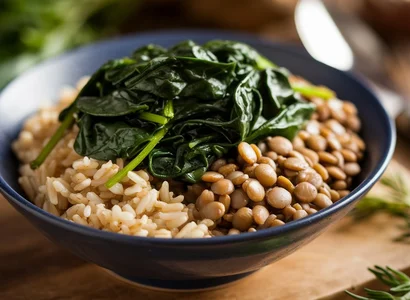
Day 6
Breakfast:
- Whole wheat pancakes topped with sliced peaches and a drizzle of maple syrup (2 whole wheat pancakes, 1/4 cup of sliced peaches, 1 tsp of maple syrup)
- Veggie and cheese scramble with bell peppers, cucumber, and cheddar cheese (2 eggs, 1/4 cup of bell peppers, 1/4 cup of cucumber, 1 tbsp of cheddar cheese)
- Mango and spinach smoothie with almond milk (1 cup of mango, 1 cup of spinach, 1 cup of almond milk)
Lunch:
- Spinach and quinoa salad with grilled chicken, avocado, and apple cider vinegar (2 cups of spinach, 3 oz of grilled chicken, 1/4 avocado, 2 tbsps of apple cider vinegar)
- Chickpea and vegetable curry with brown rice (1 cup of chickpeas, 1 cup of mixed vegetables, 1/2 cup of cooked brown rice)
- Creamy cauliflower soup with a dash of olive oil and herbs (1 cup steamed cauliflower, 1 tsp olive oil, herbs like parsley for garnish)
Dinner:
- Grilled salmon with roasted asparagus and quinoa (4 oz of grilled salmon, 1 cup of roasted asparagus, 1/2 cup of cooked quinoa)
- Brown rice with cooked lentils and sautéed spinach (1/2 cup cooked brown rice, 1/2 cup cooked lentils, 1/2 cup sautéed spinach)
- Vegetable stir-fry with tofu, broccoli, and brown rice (4 oz of tofu, 1/4 cup of broccoli, 1/2 cup of cooked brown rice)
Snacks:
- Apple slices with cottage cheese (1 medium apple, 1/2 cup of cottage cheese)
- Celery sticks with almond butter (2 medium celery sticks, 1 tbsp of almond butter)
- Trail mix with pistachios, dried mango, and sunflower seeds (1/4 cup of pistachios, 2 tbsp of dried mango, 2 tbsp of sunflower seeds)
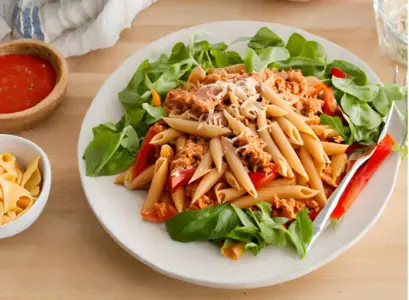
Day 7
Breakfast:
- Greek yogurt with granola and mixed berries (1/2 cup of Greek yogurt, 1/4 cup of granola, 1/4 cup of mixed berries)
- Veggie frittata with mushrooms, spinach, and goat cheese (2 eggs, 1/4 cup of mushrooms, 1/4 cup of spinach, 1 tbsp of goat cheese)
- Green smoothie with kale, pineapple, and almond milk (1 cup of kale, 1 cup of pineapple, 1 cup of almond milk)
Lunch:
- Baked sweet potato topped with steamed spinach and olive oil (1 medium sweet potato, 1 cup steamed spinach, 1 tsp olive oil)
- Spinach salad with grilled shrimp, strawberries, and balsamic vinaigrette dressing (2 cups of spinach, 3 oz of grilled shrimp, 1/4 cup of strawberries, 1 tbsp of balsamic vinaigrette dressing)
- Veggie burger on whole grain bun with baked sweet potato fries (1 veggie burger, whole grain bun, 1/2 cup of baked sweet potato fries)
Dinner:
- Eggplant parmesan with whole wheat penne pasta (1/2 cup of eggplant parmesan, 1/2 cup of whole wheat pasta)
- Stuffed bell peppers with lean ground turkey and brown rice (2 stuffed bell peppers, 1/2 cup of ground turkey, 1/2 cup of cooked brown rice)
- Vegetable and tofu curry with cauliflower rice (4 oz of tofu, 1 cup of mixed vegetables, 1/2 cup of cauliflower rice)
Snacks:
- Rice cakes with avocado and cucumber slices (2 rice cakes, 1/4 avocado, 4 cucumber slices)
- Steamed edamame with sea salt (1 cup of steamed edamame, sprinkle of sea salt)
- Almonds and dried cranberries mix (1/4 cup of almonds, 2 tbsp of dried cranberries)
Pancreatitis Diet Food List
When creating a 7 day meal plan for pancreatitis, it is important to choose foods that are gentle on the pancreas while providing essential nutrients.
By including these foods in your pancreatitis diet plan, you can ensure that you are providing your body with the necessary nutrients while minimizing strain on the pancreas.
Here are some foods that should be included in your pancreatitis diet plan:
Proteins
- Lean meats: Skinless chicken, turkey, and lean cuts of beef or pork
- Fish: Salmon, trout, and other fatty fish rich in omega-3 fatty acids (in moderation)
- Egg whites: A great source of protein without the fat of the yolk
- Tofu: A plant-based protein option that is low in fat
- Legumes: Lentils, chickpeas, and black beans (in moderation)
Grains
- Whole grains: Brown rice, quinoa, and whole wheat bread
- Oatmeal: A good source of fiber and easy to digest
- Couscous: Light and versatile, can be paired with various vegetables
Fruits
- Berries: Blueberries, strawberries, and raspberries (fresh or frozen)
- Apples: Especially when cooked or in applesauce
- Pears: Fresh or canned in juice (avoid syrup)
- Bananas: Easy to digest and gentle on the stomach
- Melons: Watermelon and cantaloupe
Vegetables
- Leafy greens: Spinach, kale, and arugula (cooked if sensitive)
- Steamed vegetables: Broccoli, carrots, zucchini, and bell peppers
- Squash: Butternut squash and zucchini
- Root vegetables: Sweet potatoes and regular potatoes (without skin if sensitive)
Dairy Alternatives
- Low-fat dairy: Greek yogurt and cottage cheese (in moderation)
- Non-dairy alternatives: Almond milk, oat milk, or coconut yogurt (ensure they’re low in sugar)
Healthy Fats
- Olive oil: Use in moderation for cooking or dressings
- Avocado: A source of healthy fats; use sparingly
Snacks
- Rice cakes: Light and easy to digest
- Nuts and seeds: In moderation; almonds and chia seeds are good choices
- Homemade smoothies: Using low-fat yogurt, fruits, and vegetables
Beverages
- Water: Stay well-hydrated
- Herbal teas: Chamomile or ginger tea for soothing effects
- Low-sugar juices: Apple or pear juice (diluted if necessary)
Foods to Avoid with Pancreatitis
When managing pancreatitis, it’s important to avoid foods that can trigger inflammation and cause digestive discomfort.
Here are some foods to avoid with pancreatitis:
High-Fat Foods
- Fried foods: Fried chicken, fries, doughnuts, onion rings, fried fish.
- Fast food: Burgers, pizza, hot dogs, fried chicken sandwiches, tacos.
- Fatty meats: Bacon, sausage, pork ribs, lamb, fatty cuts of beef.
- Full-fat dairy: Whole milk, butter, cream, full-fat cheese, sour cream.
- Full-fat condiments: Mayonnaise, ranch dressing, creamy salad dressings, gravy.
- Full-fat and creamy soups: Cream-based soups, bisques, chowders.
Acidic or Citrus Foods
- Citrus fruits: Oranges, lemons, limes, grapefruits, tangerines.
- Tomato products: Tomato sauce, ketchup, salsa, tomato soup.
- Vinegar-based foods: Pickles, mustard.
Sugary Foods
- Sugary desserts: Cakes, pastries, cookies, candy bars, doughnuts.
- Sugary beverages: Sodas, sweetened fruit juices, energy drinks, sweetened teas.
- Ice cream and other full-fat desserts
Alcohol
- Alcohol is a leading cause of acute pancreatitis and should be completely avoided.
- All alcoholic beverages: Beer, wine, spirits, cocktails.
Processed Foods
- Processed meats: Salami, pepperoni, ham, bologna, hot dogs.
- Frozen meals: Frozen pizza, lasagna, TV dinners, frozen burritos.
- Instant noodles
Refined Carbohydrates
- White bread, pasta, and rice
- Pastries and baked goods made with white flour
Spicy Foods
- Chili peppers
- Hot sauces
- Spicy curries
- Jalapeños
- Salsa
- Spiced-up processed snacks
High-Fiber Foods (in acute cases)
- High-fiber foods can be difficult to digest during acute pancreatitis flare-ups, so it’s best to limit them until recovery.
- Raw vegetables (in large amounts)
- Nuts and seeds
Full-Fat Condiments
- Mayonnaise
- Salad dressings
- Cream-based sauces
Red Meat
- Beef, lamb, and other fatty cuts can trigger flare-ups.
Full-fat and Creamy Soups
- Avoid soups that contain heavy cream or butter.
Benefits of a 7 Day Meal Plan for Pancreatitis
Having a well-designed pancreatitis meal plan is essential for individuals with pancreatitis. Here are some reasons why:
1. Balanced nutrition
A 7 day meal plan for pancreatitis ensures that individuals with pancreatitis receive a well-balanced diet that includes all the necessary nutrients. This is crucial for overall health and supporting the healing process.
2. Ensures consistency
Following a 7 day meal plan for pancreatitis provides consistency in dietary choices, which can help manage symptoms and prevent exacerbation of pancreatitis. Regular meal times and portion control are key factors in maintaining stability.
3. For easy meal prep
Having a detailed pancreatitis diet plan simplifies the process of grocery shopping and meal prep. It eliminates the need for constant decision-making and allows individuals to focus on their health without added stress.
4. Awareness of trigger foods
By following a pancreatitis diet plan, individuals can identify foods that may trigger symptoms and avoid them. This helps in managing pancreatitis more effectively and reducing the risk of flare-ups.
5. Supports weight management
Pancreatitis can lead to weight loss or weight gain, depending on the individual. A well-designed pancreatitis diet plan can help individuals achieve and maintain a healthy weight, which is important for overall well-being.
6. Promotes healing
A 7 day meal plan for pancreatitis that includes nutrient-rich foods can support the healing process of the pancreas and reduce inflammation. It provides the body with the necessary nutrients to repair and regenerate damaged tissues.
Pancreatitis Meal Planning Tips
Embracing these tips not only makes pancreatitis diet planning and preparation more manageable but also significantly contributes to your overall health and well-being.
Here are some useful pancreatitis meal planning tips to help manage symptoms and promote healing:
1. Focus on Low-Fat Foods
- Stick to foods that contain less than 10 grams of fat per meal.
- Opt for lean proteins like skinless chicken, turkey, tofu, or fish.
- Use low-fat dairy products or non-dairy alternatives such as almond milk or oat milk.
2. Choose Easy-to-Digest Foods
- Prioritize cooked vegetables over raw, as they’re easier on the digestive system.
- Stick to low-fiber fruits like applesauce, melons, and bananas.
- Whole grains like oatmeal and brown rice are great, but avoid large amounts of fiber during flare-ups.
3. Small, Frequent Meals
- Eating smaller meals throughout the day helps reduce the burden on the pancreas.
- Aim for 5–6 smaller meals instead of 3 large ones.
4. Stay Hydrated
- Drink plenty of water and stay away from sugary or carbonated drinks.
- Consider coconut water or herbal teas as refreshing, hydrating options.
5. Avoid Acidic, Spicy, and Fatty Foods
- Stay clear of acidic foods like citrus fruits, tomatoes, and vinegar-based products.
- Avoid spicy foods that can irritate your digestive tract.
- Limit fats, especially from sources like fried foods, red meat, and processed snacks.
6. Go for Lean Proteins
- Choose lean meats like chicken, turkey, and fish.
- Plant-based proteins like lentils, tofu, and beans (if tolerated) are excellent low-fat options.
- Egg whites are another good source of low-fat protein.
7. Incorporate Omega-3 Fatty Acids
- Opt for fatty fish like salmon or mackerel, which provide beneficial omega-3s without being overly fatty when prepared correctly (like grilled or baked, without added oils).
- Include chia seeds or flaxseeds for plant-based omega-3s.
8. Avoid All Alcohol
- Alcohol is one of the leading causes of pancreatitis flare-ups and should be completely avoided.
9. Embrace Low-Fat Cooking Methods
- Use cooking methods like steaming, boiling, grilling, or baking rather than frying.
- Use non-stick cookware to minimize the need for oils and butter.
10. Read Labels for Hidden Fats and Sugars
- Check food labels for added sugars and fats, especially in processed foods.
- Opt for products labeled as “low-fat” or “fat-free”, but avoid those with added sugars.
11. Avoid Caffeine and Sugary Beverages
- Limit or avoid caffeine from sources like coffee or energy drinks, as it can aggravate symptoms.
- Stay away from sodas and sweetened beverages.
12. Introduce New Foods Gradually
- If recovering from an acute pancreatitis flare-up, introduce new foods slowly to see how your body reacts.
- Start with simple, bland foods like plain rice, toast, and applesauce, then gradually reintroduce others.
13. Consult with a Dietitian
- Work with a registered dietitian to create a personalized meal plan that suits your nutritional needs while managing pancreatitis.
14. Keep a Food Diary
- Track the foods you eat and how you feel after meals to identify any potential triggers.
15. Avoid Heavy Meals at Night
- Large, rich meals before bedtime can overload your digestive system and worsen symptoms. Stick to light meals in the evening.
Pancreatitis Diet Resources
When following a pancreatitis meal plan, it can be helpful to access additional pancreatitis diet resources.
Here are some recommended resources for pancreatitis meal planning:
1. National Pancreas Foundation
This foundation offers information, resources, and support for individuals living with pancreatitis. They provide educational materials, research updates, and a community forum for sharing experiences.
2. Academy of Nutrition and Dietetics
The American Dietetic Association provides information on various health conditions, including pancreatitis. They offer resources on nutrition, meal planning, and finding a registered dietitian in your area.
3. Online support groups
Joining online support groups or forums like HealthBoards can provide a sense of community and allow you to connect with others who are going through similar experiences.
Conclusion
Following a 7 day meal plan for pancreatitis can be a valuable tool in managing symptoms and supporting the healing process.
By including nutrient-rich foods, avoiding trigger foods, and making lifestyle changes, individuals with pancreatitis can optimize their health and improve their quality of life.
Remember to consult with a healthcare professional or registered dietitian to create a meal plan that suits your specific needs.
With a pancreatitis meal plan and making proper lifestyle choices, you can take control of your pancreatitis and support your overall well-being.
Are you searching for a compassionate and certified senior caregiver, contact me for further details.
- 7-Day Meal Plan for Kidney Disease
- Candida cleanse diet plan
- Keto diet plans
- Alkaline diet food list
- Gluten-Free Meal Plan
- 7 Day Meal Plan for Gastritis Relief
- 7 Day Meal Plan for Elderly
- 7-day MIND diet for beginners
- Small Fiber Neuropathy: Symptoms, Causes, and Treatment
- Mediterranean diet meal plan
- Diabetic meal plan
- Comfort care or palliative care
- 7 day meal plan for ulcerative colitis
- 7 day low-sodium diet meal plan
- 5 foods to avoid with trulicity
- 7-day meal plan for pregnant women
Frequently Asked Questions (FAQs)
Are there specific foods to avoid for pancreatitis?
Yes, certain foods like fried and high-fat foods, high sugar foods, alcohol, spicy foods, and processed foods exacerbate or worsen pancreatitis symptoms should be limited or avoided when crafting a pancreatitis meal plan.
Are eggs good for the pancreas?
Yes, eggs can be a part of a pancreatitis diet as they are a good source of protein BUT try to avoid egg yolks because of their high-fat content.
Can you eat bananas with pancreatitis?
Yes, bananas are generally considered a safe fruit for people with pancreatitis due to their low acidity and gentle nature on the digestive system. They provide important nutrients like potassium and fiber.
How to cleanse your pancreas?
There is no specific method to “cleanse” the pancreas. However, maintaining a healthy lifestyle with a balanced pancreatitis diet rich in fruits, vegetables, whole grains, lean proteins, and healthy fats can support pancreatic health.
Additionally, avoiding alcohol, tobacco, and excessive sugar intake also contributes to a healthy pancreas.
How to calm down pancreatitis?
Calming down pancreatitis includes resting the pancreas by fasting or consuming a clear liquid diet, taking prescribed medications for pain and inflammation, and avoiding triggers such as alcohol and fatty foods.
Hydration and gradual reintroduction of solid foods as tolerated are also part of the pancreatitis management plan.
Disclaimer: The information provided in this article is for educational purposes only and should not replace medical advice.
Please consult with a healthcare professional or registered dietitian for personalized advice based on your specific condition and needs.

